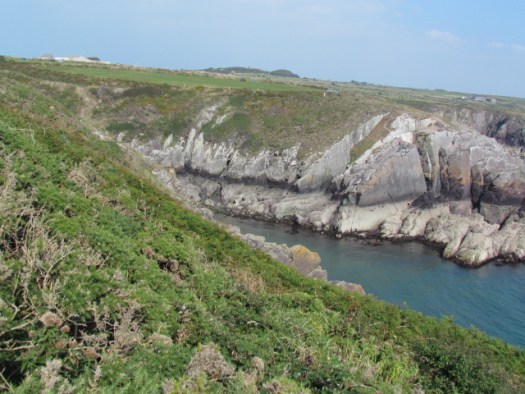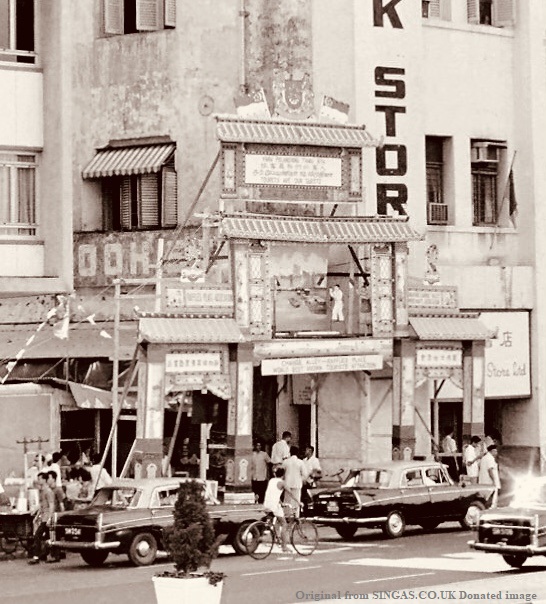A small vignette: Bjarke Strongarm, a character from Twilight Sojourn.
“Bjarke Strongarm was a seafaring trader, it was a steady, reliable occupation, but when trade was slow and the lure of adventure beckoned, Bjarke hired himself as a mercenary. He remembered as a boy before the family hearth, listening to the stories his father Harald and his grandfather told of the old Viking raids across the seas.
He would imagine himself standing at the prow of a dragon-ship, His young arms holding onto the intricately carved

dragon’s neck, his golden hair streaming wildly back from his face, whipping in the wind. The sea a rearing froth of foam, slipping under the keel, sea spray wet on his cheeks. He found himself smiling at the thought of his boyhood self, longing to take to the sea with his father and go raiding. In 1081 Ireland was settled and the Viking way of life was becoming a thing of the past.
Bjarke had returned earlier in the day to Vedrarfjordr in southern Ireland from a profitable trip to a Frankish port, his cargo had been unloaded and he sat now with a horned cup of ale, listening to the talk around him. Vedrarfjordr’s mead hall was packed, with men from the longphort, the shore fortress on the river Suir. The buzz of conversation that washed around Bjarke was of a late season raid to the shores of Wales. Someone was gathering troops and ships.

The thought of placing the fearsome dragon head, that had once ornamented the prow of his father’s longship, onto the prow of the Sea Hawk, sent a kick of excitement thumping through his veins. He pushed himself up from the bench he’d been resting on and shouldered his way through the closest group of men to a man he knew. At six-foot-tall, the huddle of men easily gave way to Bjarke, making room for him in their midst.
He nodded his head to the man he knew. “Olaf. Who is this you talk of?” Olaf clapped a hand to Bjarke’s shoulder. “They speak of Gruffudd ap Cynan, he is gathering an army, to make a second bid for the throne of Gwynedd, in Wales. They say he needs ships to carry men across the Irish Sea. They are to leave in a few weeks.”
“Are they raiding?”
Olaf laughed heartily. “I suppose. A battle for sure. There is much talk of an Welsh army massing near a place called St Davids, for certain there will be pillaging. It will be like old times my friend,” he chuckled.
“My ship is large. Do you know how many men and ships Gruffudd is gathering?”
“Word has it he is calling for six hundred, both Danes and Irish.”
Bjarke whistled. “That many! Who do I talk to? The Sea Hawk can carry supplies and men.”
“Olaf jerked his head towards the front of the hall. Gruffudd’s commander is over there.”
Bjarke strode the length of the hall, to find a throng of men gathered around the commander, four deep, vying for the chance to sign up. He had more than most to offer, he had the Sea Hawk. He looked down at his ale still half full, lifting it to his mouth he took a long swallow, his throat working as he emptied the cup. He took a breath and thumped the empty cup down on the board. A man sat opposite watching him. He didn’t look like a Dane, not dressed in typical furs, but dressed in a tooled leather gambeson. The man’s green eyes looked at him with cool appraisal, then he gave a nod and lifted his own cup, to swallow a mouthful, breaking their connection.
“You travelled far stranger?” Bjarke leveled his blue eyes on the man, curious. It was obvious by his dress the man was a warrior, a bowman possibly judging by the scuffed leather guard he wore on his left wrist, although he also carried a sword.
“Far enough,” answered Rhain ap Cunadda.”
~~~~~~~~~~~~~~~~~~~~~~~~~~~~
The Vikings terrorized the British Isles from the end of the eighth century for almost four hundred years. On June 8th 793 Viking dragon ships came ashore on the Holy island of Lindisfarne, off the coast of Northumberland. It was not the first attack on these shores, but the desecration of St Cuthbert’s sent shock waves throughout Europe. The monks from the monastery were slaughter, drowned in the sea or taken to be sold as slaves in the slave markets of Europe. Thereafter the Viking raids intensified.
Why did they come? For many reasons! Their homelands were over populated, the economic resources poor, and the lure of adventure and wealth was a great incentive. In the beginning they raided coastal monasteries, easy targets holding great wealth with only monks guarding them. The two main countries that went Viking, meaning any seafaring pirates who raided, were the Norwegians and the Danish.

Skilled boat builders and seamen, they easily navigated the North Sea. Their longships equipped with many oarsmen were not at the mercy of the winds and currents. They designed their longships, with shallow drafts, allowing for easy navigation up estuaries and rivers, over the years, taking the raiders far inland. At first the attacks were hit and run affairs but after a time the Vikings began to over winter so they could begin their attacks early the following year. Longphorts were built, families joined the raiders and slowly many of the islands around Britain as well as the mainland were settled by the raiders. Over the four hundred years many came and settled rich fertile land. Viking place names and festivals are still to be seen throughout the British Isles today.
In 794 the first Norse attack began in Irish waters, these early raiders returned back home with tales of the bright green fields and rich fertile land of Ireland. The raiders came in greater numbers and settled. For nearly two hundred years Dublin remained exclusively a Norse or Danish city. The Irish people called the Norwegians, white heathens “Lochlannaigh.” The Danes were referred to as black heathens “Danair.” By the tenth century Dublin, Cork and Waterford were all strong walled ports, “Longphorts” from where Vikings would cross the Irish Sea to raid, for riches and slaves. Danegeld was a tribute paid to the Vikings so they would leave towns and villages alone and raid elsewhere.
History and Twilight Sojourn:
Gruffudd ap Cynan the future king of Gwynedd in Northern Wales was born in Dublin; his mother was the

granddaughter of King Sigtrygg Silkbeard. His father was a Welsh Prince, who was claimant to the Kingship of Gwynedd. Gruffudd frequently used Ireland as a refuge and a source for gathering troops because of his close family connections with the Danish settlement around Dublin.
In 1081 Gruffudd made an alliance with Rhys ap Tewdwr of Deheubarth. Gruffudd embarked from Waterford with a force composed of Danes and Irish warriors. (Chapter Four.)
Waterford is a port city on the southeast coast of Ireland. The name is derived from an old Norse word “Vedrarfjordr” and believed to have been founded in 914 by the Viking Ragnall (the grandson of Ivar the Boneless).
The photographs were taken from trips to Norway and Iceland. The images of the Viking ships were taken in Oslo at the “The Viking Ship Museum”. If you would like to read more, here are some references.
The history of Gruffudd ap Cynan
The website: The history Press
The Viking Warrior by Ben Hubbard
The Story of the Irish Race by Seumas MacManus
Recommended Books: James L. Nelson has a whole series of novels about the Vikings coming to Ireland. The first novel is about a man who takes his son on his first Viking raid to the shores of Ireland, and the adventures that befall them. These are the first three books.
“Fin Gall.” In book and audible.
“Dubh-Linn.” In book and audible.
“The Lord of Vik-Lo.” In book and audible.
If you would like to receive future monthly posts, updates and giveaways, pleased leave me an email marilyn@storyteller.space or visit my website for more about writing and the history behind the scenes. HTTP://STORYTELLER.SPACE
Marilyn






Leave a Reply